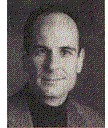 Commonwealth Commentary Newsletter home Commonwealth Commentary Newsletter home |

BOOK REVIEW
January 2001
Back to Basics for the Republican Party
By Michael Zak
How many Americans know why the Republican Party began or what its original purpose was? Not many! How many Americans know, for example, that the 1964 Civil Rights Act and the 1965 Voting Rights Act were reforms that the Republican Party struggled for in vain during the Reconstruction era a hundred years earlier? Fewer still. The 13th amendment banning slavery, the 14th amendment extending the Bill of Rights to the states, and the 15th amendment according voting rights to blacks - all three were enacted by the much-maligned Radical Republicans in the face of fierce Democrat opposition. How many Americans know that? Again, very few.
As party symbols, the donkey and the elephant predate the famous Thomas Nast cartoon. The donkey symbol started as a Whig Party caricature of Andrew Jackson as a jackass, or donkey. The elephant symbol first appeared on 1860 Republican posters showing onrushing pachyderms, to signal that our Party was unstoppable. Also, the earliest known T-shirt with a slogan printed on it is from 1948, reading "Dew it with Dewey."
In 1884, Republican presidential nominee James Blaine was edged out in the Electoral College because he lost New York state to Democrat Grover Cleveland by just 1047 votes. In contrast to Al Gore, Blaine conceded the next day.
The common spin is that Samuel Tilden was cheated out of the presidency in 1876 because, while winning the popular vote he was robbed of the electoral votes of three contested southern states. On the contrary, it was Rutherford Hayes who was cheated out of hundreds of thousands of popular votes in those and other southern states by the Democrats, who prevented nearly all blacks and former white Unionists from voting. (The term "hill billy," incidentally, originated as a reference to the "Billy Yanks" in the hills of Appalachia and the Ozarks.)
The three southern states in question were the three which still had Republican governors, who were able to prevent ballot-stuffing but not intimidation and force, by Democrat paramilitary groups such as the Ku Klux Klan, the Knights of the White Camellia, and the Regulators. Tellingly, the 1880 Democrat platform accused the Republicans of having stolen the electoral votes of only two states, tacitly admitting that Hayes had indeed won at least one of the three states. Hayes won fair and square. Same for Benjamin Harrison and for the same reason, in 1888. That was the year our Party became known as the GOP, with the slogan "The Grand Old Party is Back!"
In the Old West, marshals worked for territorial governors while sheriffs were hired at the local level. Anyway, Wyatt Earp and his brothers were made marshals in Tombstone by the Arizona territorial governor in order to take out the Clanton gang, horse thieves in cahoots with the Democrat sheriff of the town. The name of that territorial governor? John C. Fremont, the first presidential candidate of the Republican Party, in 1856.
You can read about it at www.republicanbasics.com. For Insight Magazine's glowing review, see www.insightmag.com/archive/200011144.shtml , comparing it favorably to David Horowitz's latest book.
"Back to Basics for the Republican Party" is JUST what our Grand Old Party needs right now, because the more we Republicans know about the history of our Party, the more the Democrats should worry about the future of theirs. To quote from page 6:
"As knowledge is power, we must understand how trends from the past entrap us today, for 'You shall know the truth and the truth shall set you free.'"
The book and its website, www.repubicanbasics.com , will be deeply resented by Democrats across the country.
 |
The author, Michael Zak, a native and resident of Chicago, is a graduate of the Georgetown University School of Foreign Service and the American Graduate School of International Management, and is a former Foreign Service Officer. Before writing this book, he worked as a financial analyst in Chicago and New York.
|
2001 CCN All Rights Reserved Triangle Communications LLC